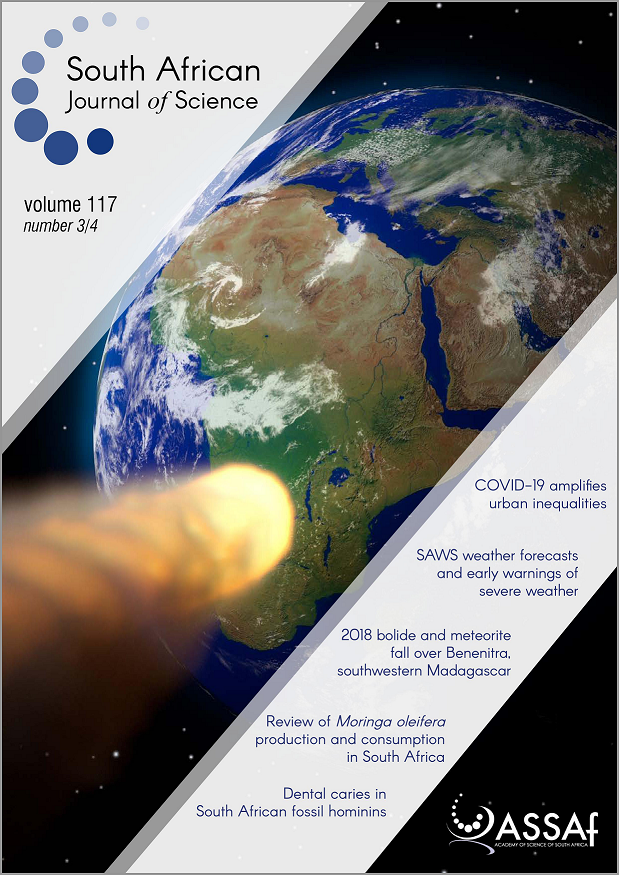Identifying potential protected areas in the Grassland Biome of South Africa
DOI:
https://doi.org/10.17159/sajs.2021/7507Keywords:
biodiversity, conservation, ecosystem services, focus areas, Heilbron– Petrus Steyn Target AreaAbstract
South Africa is considered to be one of the most biologically diverse countries in the world. The conversion, degradation, and fragmentation of natural habitats have caused a loss of biodiversity in many areas. Grasslands have been widely recognised as important for both biodiversity and economic development. Many conservation efforts have in the past been theory driven, without actionable, feasible results. We hypothesised that correct implementation of the available data will indicate where conservation efforts should be focused to move closer to achieving targets for biodiversity conservation in the Grassland Biome in South Africa. We identified an area (near Heilbron and Petrus Steyn in the Free State) that is representative of the biodiversity in the region and is suitable for modern conservation efforts in the ‘real world’. This approach provides a practical look at conservation in the modern era and a feasible result for conservation efforts.
Significance:
- An area in the Free State Province was identified that has a high level of biodiversity representative of the Grassland Biome in South Africa. A subjective process was implemented to ensure that the area represents the factors that are considered important for conservation, land use and appropriate location in order to make the area a feasible target for conservation. The result therefore represents not only a theoretical finding that is based on data analysis, but also a practical approach to ensure that the findings can be implemented. This study is an effort to provide a baseline for a more modern approach to conservation, in which current land use, economic value and conservation value are all considered to achieve a sustainable result in terms of the conservation of biodiversity.
Published
Issue
Section
License

All articles are published under a Creative Commons Attribution 4.0 International Licence
Copyright is retained by the authors. Readers are welcome to reproduce, share and adapt the content without permission provided the source is attributed.
Disclaimer: The publisher and editors accept no responsibility for statements made by the authors
How to Cite
- Abstract 708
- PDF 813
- EPUB 152
- XML 173












.png)